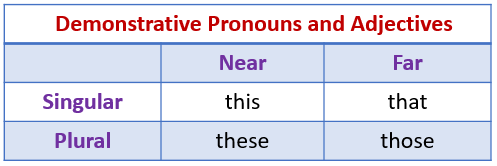

Here and there are understood in the pronouns. It is never correct to combine this with here or those with there. There are certain rules we need to follow to apply demonstrative pronouns correctly. It is a simple concept, but its types, such as demonstrative pronouns, need a little more attention. Someone other than the speaker is holding the cookies, or the cookies are not near the speaker. Pronouns are words used to replace a noun to avoid repetition. The speaker is holding or eating the cookies, or the cookies are close by. Demonstrative pronouns (this one, that one, the one, these, those) refer to a previously-mentioned noun in a sentence. The speaker is probably talking about the friend, not introducing him or her. The friend is far away from the speaker (across the room, for example). The speaker is likely introducing the friend to another person. That and those refer to objects or people far from the speaker. This and these refer to objects or people that are close to the speaker. In addition to providing information about whether something is singular or plural, demonstrative pronouns indicate whether something is close to or far from the speaker.

Those are the tallest skyscrapers in the city. These and those refer to plural objects or people. This and that refer to singular objects or people. Demonstrative pronouns show or point to objects or people. These pronouns can indicate items in space or time. Definition: To demonstrate is to show something. A demonstrative pronoun is a pronoun that is used to point to something specific within a sentence.


 0 kommentar(er)
0 kommentar(er)
